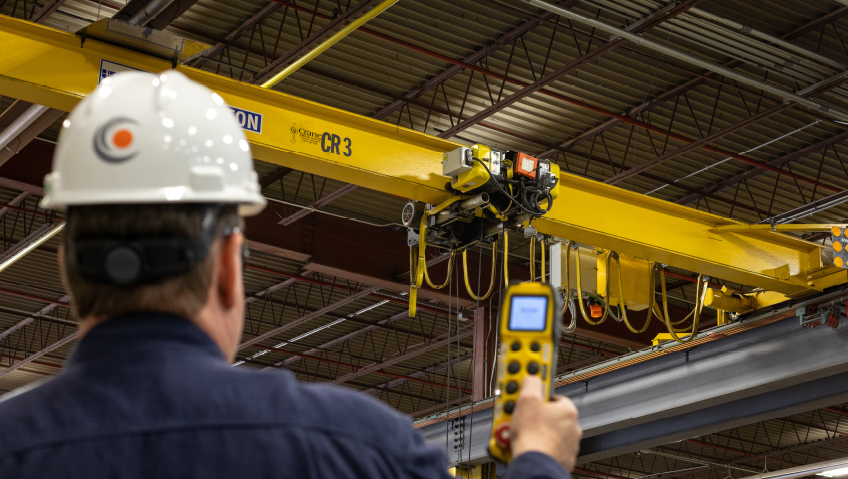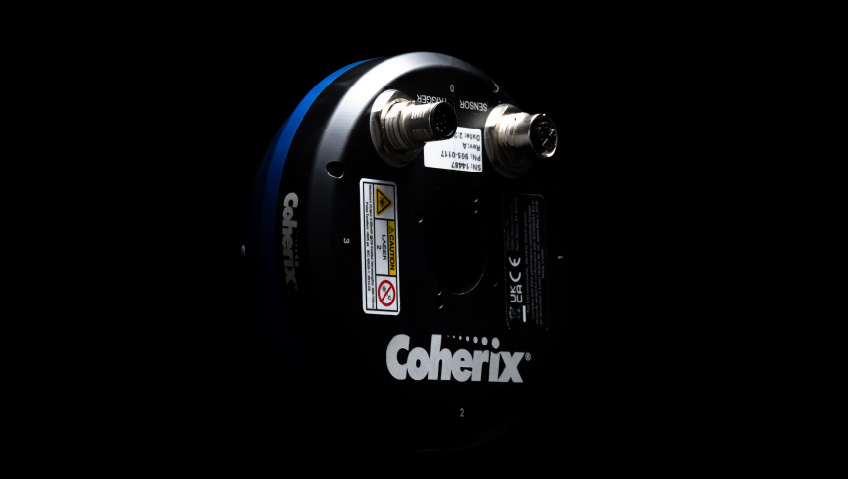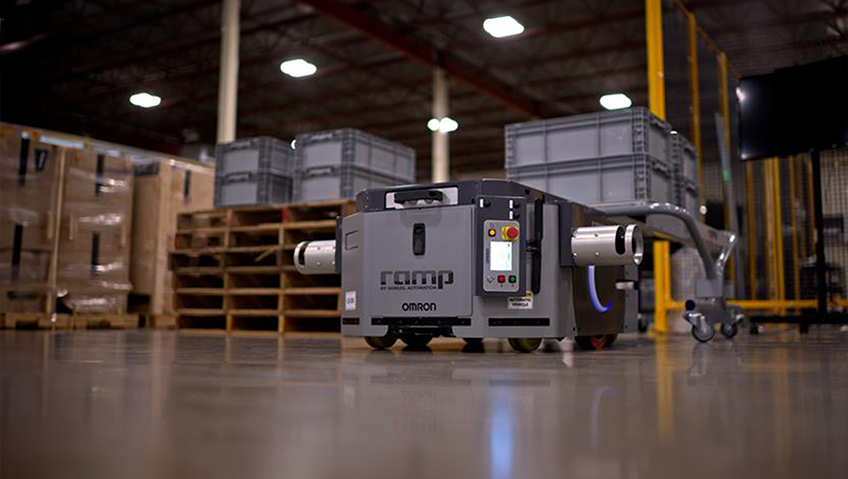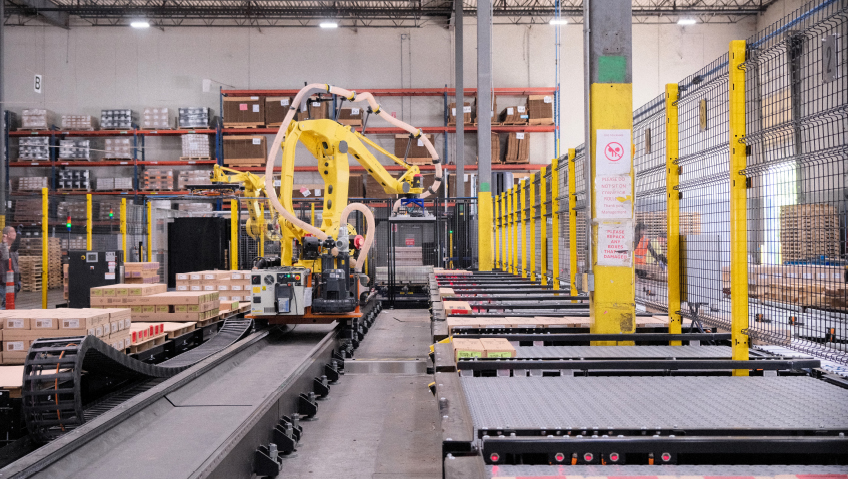With 30 sales offices and 13 production facilities worldwide, Conductix-Wampfler boasts a truly global network with a reach that spans the industrialized world. The company’s rich history, comprising a series of once-separate companies who now operate as part of the internationally recognized Delachaux Group, began at the turn of the 20th century and continues bravely and confidently into the 21st.
Now, from its regional headquarters in Omaha, Nebraska, Conductix-Wampfler is the largest global producer of systems and equipment for transferring energy and data for applications including cranes, people movers, light rail systems, and numerous types of manual and automated machines.
Hailed as a new leader in energy and data transmission systems, the company is working toward ushering in the modern automation era, shifting from leading in electricity to now also offering datalink infrastructure.
“What’s the core focus of Conductix-Wampfler? Infrastructure support for mobile equipment,” says Andrew Dierks, Director of Marketing. “We specialize in providing the necessary infrastructure for a breadth of different markets and applications, from overhead cranes and intralogistics to amusement parks and ports that pull in shipping containers – and everything in between.”
The market has been shifting toward Industry 4.0, IoT (Internet of Things), and automation, and there are good reasons for this, he says, from productivity and safety reasons to adding sensors to make processes more efficient or stable.
Some are doing it specifically to move the operator away from unsafe scenarios.
“Consider smelting plants where there are really high-temperature metals or mining situations where you’re in a difficult area,” Dierks says. “A lot of our customers have been asking for technologies that allow them to gain connectivity for equipment for lots of different reasons.”
Taking customers’ concerns to heart, Conductix-Wampfler looked at providing that infrastructure, and how to provide not only power but also the data that gives them everything needed for equipment.
“That’s how we stumbled into this data infrastructure and started doing the market research for this market need,” he says.
One of the biggest challenges the company has is serving different markets in different applications. While Conductix-Wampfler already offers other data solutions such as fiber optic technology for connectivity, it didn’t offer any of the Wi-Fi connectivity or cellular technology options.
“While we were evaluating how to get data to a piece of equipment, we found the Wi-Fi technology really fell short in these industrial applications,” Dierks says. “A lot of times it’s because the distance is too far, or there’s too much RF noise in the area, and it just isn’t a robust enough technology. Another widely accepted data solution is the use of fiber optic cable. Although fiber provides stronger connectivity than WIFI, fiber has a finite life when inside of a cable due to constant bending cycles. Larger conductors in hybrid cables tend to reduce the lifetime of fiber further as well,” he explains.
“Our customers are typically engineers; they’re really smart and they find lots of great ways to make it work as well as it can, but we’re still finding that it’s a pretty big challenge for our customers to add connectivity to their devices.”
Examining the different applications and how they might add data connectivity to each of those devices was a top priority for Conductix-Wampfler.
“We offer a lot of different types of electrification products because there’s no one-size-fits-all solution for electrification, and as it turns out it’s the same for data as well – there’s really no one-size-fits-all,” says Dierks.
“We took a step back and looked at it from a blank sheet approach. We talked to lots of customers over a few years and asked a lot of questions about how they might use it. If they could wave a magic wand, how would they prefer to get that data from sensors back to a processor, or from a camera back to a main control station?”
The company also asked about how clients were solving problems – what struggles they were having with current technologies. They found all the existing technologies lacking.
Conductix-Wampfler came up with several solutions to help improve connectivity in these applications. The first was a technology based on a slotted microwave guide that leverages existing, Wi-Fi technology but harnesses it in a channel inside that microwave guide. This prevents all external noise from entering and Wi-Fi signals from leaking out.
“That worked pretty well, and we got some good traction with that, but its main limitation is that it only works for straight-line applications, so you can only have it if a piece of equipment is moving up and down in a single straight line.”
Looking at other technologies not employed in this space, Conductix-Wampfler found it was able to use the existing conductive path and overlay data signals on top of the power signals.
This patented technology gives the company hardwired connectivity that works through all the conductive paths, so it doesn’t matter whether they use conductor bar, slip ring or festoon – it works through all the different products that connect mobile equipment to a stationary point, greatly expanding the types of equipment to add data to.
“That technology is also more secure because it doesn’t radiate in open space like Wi-Fi,” adds Dierks. “It’s not easily hackable, and it also doesn’t contribute to super noisy RF environments.”
Another major benefit – and one of the reasons why Conductix-Wampfler picked it as a platform – is that it also makes retrofitting existing equipment easy as it already rides on the existing conductive path.
With competitors’ equipment, the company often must rip out the entire conductive path whether it’s conductor bar or festoon, which causes two problems – not only is it costly to replace the conductive path and electrical infrastructure but there’s also substantial downtime of equipment during replacement.
“With this technology, they don’t have to take up that infrastructure,” Dierks says. “They can leave all of that there and add sensors, controls, or cameras very easily. That’s a huge benefit.”
Some of the company’s products also get embedded inside OEM (Original Equipment Manufacturers) equipment machines, and in those situations, they’ll often take that piece of equipment and design it around the electrification. This means they don’t have space to expand if they want to add a data path.
“This works because if they’ve got some design constraints on the machine based on the packaging of our components inside of their equipment, they don’t have to change that, so that makes their design cycle much easier as well.”
The Nexus BB Powerline Communication System is paying off in terms of productivity.
“We have one customer who’s using it in an amusement-ride application,” says Dierks. “They had deployed an industrial Wi-Fi solution, and in the amusement-ride environment, they often have local cellular devices and repeaters to help handle the huge load of people in each area.
“A lot of that type of equipment was producing a ton of RF noise, causing their industrial Wi-Fi equipment, which was handling control signals and sensing equipment, to drop out.”
They became one of Conductix-Wampfler’s very first customers for this technology.
“They were ecstatic because our Nexus BB isn’t affected by a noisy RF environment. They’ve been able to create a secure and reliable link that’s not affected by noisy RF environment, increasing uptime of their equipment and reliability.”
Because it can move so much data, the Nexus BB also assists with removing operators from dangerous situations, allowing companies to put both control and camera signals over the same path.
“They could remotely mount camera and controls and the operator could be away from a really high-heat dangerous area in a smelting plant,” says Dierks. “Anytime you can remove an operator from a dangerous situation, it’s a good thing for the company and the operator.”
Conductix-Wampfler currently offers a solution for hospitals and the military where sensitive environments forbid wireless signals from a data perspective.
“This hospital wouldn’t let our customer install their piece of equipment because it was Wi-Fi enabled,” says Dierks. “This technology allowed them to convert Wi-Fi to data over power so they could still have all of the same functionality, but without the radiating Wi-Fi signal.”
The company’s continual innovation extends to its approach to collecting information from customers, coupled with its successful launch of a brand-new product in the middle of the pandemic – a major achievement.
“We were worried about how to convey this if we couldn’t get in front of people and have a conversation about the technology,” Dierks says. “When you launch new and innovative technologies, there’s an educational element to it, because people aren’t necessarily looking for new technology and connectivity. People are used to all the usual suspects they go to when they need connectivity.”
Helping customers understand how this technology is different and demonstrating that it works and isn’t just vaporware or unproven is vital, he adds. Conductix-Wampfler addressed this by building a studio in its facility designed to have one-on-one demonstrations with customers both directly and remotely.
“It was set up to be flexible and allow us to demonstrate the power of technology in such a way that people can see there’s no smoke and mirrors. They see that we aren’t playing tricks to get them to believe it works, and they truly see that it does work and that we can answer any questions about how it would work in their application.”
Conductix-Wampfler has its sights set on discontinuous systems as well, says Dierks.
While the company has been focused on infrastructure linking a mobile piece of equipment to a stationary point – a continuous system where the conductive path is never broken from machine to power source – they’re now looking to apply the same innovative approach to discontinuous systems such as AGVs (Automated Guided Vehicles) and AMRs (Autonomous Mobile Robots), battery-powered systems that might need charging stations or the ability to transfer large amounts of data while charging.
“That applies to a good deal of the intralogistics market like these warehouses that are trying to automate distribution and manufacturing processes. That’s where we’re headed next.”
All the while sustaining the company’s present focus on customers, of course. “We’ve always been really good in terms of customer focus and service,” says Dierks. “What’s new for us is that since about 2014 we’ve really taken a customer focus from an innovation standpoint to understand their process.”
While Conductix-Wampfler doesn’t build a lot of equipment that end-users see, it works directly with, and enables, its OEM partner – an important piece of the puzzle.
Something else that sets Conductix-Wampfler apart is its habit of taking identified market problems for analysis and starting from scratch with a blank sheet of paper in front of them.
“We look at it like, ‘what would be the best solution for the customer?’ and come up with solutions that meet their needs and have as few concessions as possible,” says Dierks. “Right now, Conductix-Wampfler is continuing to focus on data and has a couple of new technologies we’re looking at that would push the envelope even further on the data infrastructure, and that’s just the beginning.”






